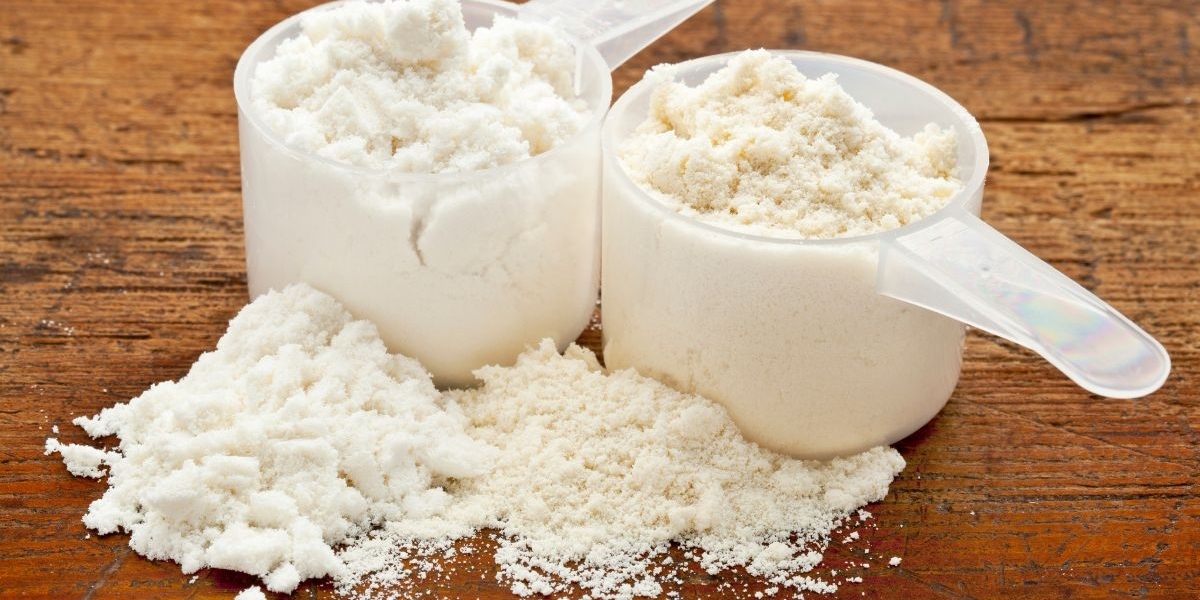The Australia whey protein market is estimated to be valued at AUD 86.13 million in 2024. It is expected to grow at a compound annual growth rate (CAGR) of 4.98% between 2025 and 2034 to reach almost AUD 140.03 million by 2034. This growth is largely driven by the increasing awareness of health and fitness, as well as the rising demand for nutritional supplements that support muscle recovery, weight management, and overall wellness. As more Australians turn to whey protein as a source of high-quality protein, the market is set to expand significantly over the next decade.
Key Drivers of the Australia Whey Protein Market
Several key factors are driving the growth of the whey protein market in Australia. Below are the primary reasons behind the increasing demand for whey protein supplements in the country:
1. Growing Health and Fitness Consciousness
The rising awareness of health and fitness has had a profound impact on the Australian whey protein market. With more individuals focusing on physical fitness and maintaining a healthy lifestyle, the demand for dietary supplements that promote muscle growth, recovery, and weight management has increased.
Whey protein, known for its high bioavailability and amino acid profile, is particularly popular among athletes, bodybuilders, and fitness enthusiasts who require quality protein to support their exercise routines. Additionally, the growing trend of home-based workouts and fitness regimes has led many consumers to rely on supplements like whey protein to meet their nutritional needs.
2. Whey Protein as a Convenient and Effective Protein Source
Whey protein is highly regarded for its digestibility and rapid absorption in the body. As a result, it is an ideal protein source for post-workout recovery, helping to repair muscle tissues and promote muscle growth. The convenience of protein shakes and ready-to-drink (RTD) protein drinks has made it an attractive option for busy individuals looking for a quick and nutritious meal replacement or snack.
Moreover, whey protein is often marketed as a complete protein, meaning it contains all nine essential amino acids, which are crucial for muscle recovery, tissue repair, and overall health. This makes it a preferred option for a wide range of consumers, from athletes to those simply looking to maintain a balanced diet.
3. Increased Demand for Plant-based Alternatives
While whey protein remains a dominant player in the market, there has been a noticeable increase in demand for plant-based protein options. This trend is driven by the growing number of vegans and vegetarians in Australia, as well as individuals with lactose intolerance or milk allergies.
However, even within this shift, whey protein continues to hold a strong position in the market due to its high-quality amino acid profile and ability to deliver superior protein synthesis. Brands have also started to innovate by introducing products that combine both whey protein and plant-based proteins to cater to a broader consumer base, ensuring that those with dietary restrictions can still benefit from its nutritional value.
4. Expanding Awareness of Whey Protein's Health Benefits
Beyond its application for muscle recovery and fitness, whey protein is increasingly being recognized for its additional health benefits. Research has shown that whey protein can aid in weight management, immune system support, and even contribute to reducing blood pressure and inflammation.
Whey protein is also gaining popularity among elderly populations who need to maintain muscle mass and overall health, as well as those seeking to manage their weight or reduce fat. These health benefits have expanded the market for whey protein beyond athletes and fitness enthusiasts, creating opportunities in broader health and wellness categories.
5. Growth of E-commerce and Online Retail
The rise of e-commerce and online retail platforms has significantly influenced the way consumers purchase whey protein products in Australia. The convenience of shopping online, coupled with the availability of a wide range of whey protein supplements, has contributed to the growth of the market. Online retailers, such as Amazon and specialty health websites, offer a variety of whey protein products, making it easier for consumers to compare options, read reviews, and purchase according to their specific needs.
The online retail market also provides access to international whey protein brands that may not be readily available in physical stores, thereby increasing the diversity of products available to Australian consumers.
Types of Whey Protein in the Australian Market
Whey protein comes in several different forms, each with unique characteristics to cater to varying consumer needs. The primary types of whey protein include:
1. Whey Protein Concentrate (WPC)
Whey Protein Concentrate is the most common form of whey protein available in the market. It contains around 70–80% protein by weight, with the remaining percentage made up of fats, carbohydrates, and lactose. WPC is cost-effective, making it a popular choice for fitness enthusiasts and consumers looking for a general protein supplement.
2. Whey Protein Isolate (WPI)
Whey Protein Isolate has a higher protein content than concentrate, typically around 90% protein by weight. It is more refined and has less fat and carbohydrates. WPI is ideal for individuals who are sensitive to lactose or looking for a more pure protein source with minimal additional ingredients.
3. Whey Protein Hydrolysate (WPH)
Whey Protein Hydrolysate undergoes partial hydrolysis, which breaks down the protein into smaller peptides for quicker digestion and absorption. This form is often used in medical and clinical nutrition, as well as for individuals recovering from surgery or illness.
Market Challenges
Despite the growth prospects, the Australian whey protein market faces a few challenges:
1. Price Sensitivity
Whey protein products, particularly high-quality isolates and hydrolysates, can be expensive compared to other protein sources. While there is a growing demand for whey protein, price-sensitive consumers may opt for more affordable protein options, including plant-based proteins or budget-friendly whey concentrates.
2. Lactose Intolerance and Dietary Restrictions
Although many consumers choose whey protein for its superior nutritional profile, those with lactose intolerance or milk allergies may have difficulty consuming traditional whey protein products. As a result, the market is seeing the introduction of lactose-free and sensitive-digestibility whey protein products to cater to these consumers. However, the competition from plant-based proteins remains a challenge.
3. Regulatory Challenges
The Australian food supplement market is highly regulated, and companies must adhere to strict standards for labeling, health claims, and ingredient sourcing. Compliance with these regulations can be costly and time-consuming, particularly for new market entrants.
Conclusion: A Positive Growth Outlook
The Australia whey protein market is poised for steady growth, driven by the increasing demand for nutritional supplements that support health, fitness, and wellness. The market is expected to reach AUD 140.03 million by 2034, with growth fueled by the rising awareness of the health benefits of whey protein, innovations in product offerings, and the expanding e-commerce landscape. As more Australians incorporate whey protein into their daily diets, the market will continue to evolve, offering new opportunities for growth and innovation within the health and fitness sectors.
With advancements in product formulations, such as lactose-free and plant-based protein blends, the market is becoming more inclusive and appealing to a wider audience. As the trend for healthier lifestyles continues to rise, the future of the Australian whey protein market looks promising.


